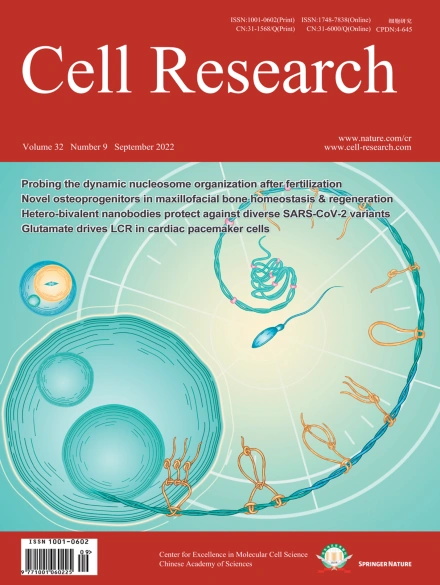
Advanced Search
Submit Manuscript
Advanced Search
Submit Manuscript
Volume 32, No 9, Sep 2022
ISSN: 1001-0602
EISSN: 1748-7838 2018
impact factor 17.848*
(Clarivate Analytics, 2019)
Volume 32 Issue 9, September 2022: 831-842 |
Hetero-bivalent nanobodies provide broad-spectrum protection against SARS-CoV-2 variants of concern including Omicron
Huan Ma1,† , Xinghai Zhang2,† , Peiyi Zheng3,† , Peter H. Dube4,† , Weihong Zeng3,† , Shaohong Chen2,5,† , Qingyu Cheng3 , Yunru Yang3 , Yan Wu2 , Junhui Zhou2,5 , Xiaowen Hu1 , Yan Xiang4,* , Huajun Zhang2,* , Sandra Chiu3,* , Tengchuan Jin1,3,6,*
1Department of Pulmonary and Critical Care Medicine, The First Affiliated Hospital of USTC, Division of Life Sciences and Medicine, University of Science and Technology of China, Hefei, Anhui, ChinaSARS-CoV-2 variants with adaptive mutations have continued to emerge, causing fresh waves of infection even amongst vaccinated population. The development of broad-spectrum antivirals is thus urgently needed. We previously developed two hetero-bivalent nanobodies (Nbs), aRBD-2-5 and aRBD-2-7, with potent neutralization activity against the wild-type (WT) Wuhan isolated SARS-CoV-2, by fusing aRBD-2 with aRBD-5 and aRBD-7, respectively. Here, we resolved the crystal structures of these Nbs in complex with the receptor-binding domain (RBD) of the spike protein, and found that aRBD-2 contacts with highly-conserved RBD residues and retains binding to the RBD of the Alpha, Beta, Gamma, Delta, Delta plus, Kappa, Lambda, Omicron BA.1, and BA.2 variants. In contrast, aRBD-5 and aRBD-7 bind to less-conserved RBD epitopes non-overlapping with the epitope of aRBD-2, and do not show apparent binding to the RBD of some variants. However, when fused with aRBD-2, they effectively enhance the overall binding affinity. Consistently, aRBD-2-5-Fc and aRBD-2-7-Fc potently neutralized all of the tested authentic or pseudotyped viruses, including WT, Alpha, Beta, Gamma, Delta, and Omicron BA.1, BA.1.1 and BA.2. Furthermore, aRBD-2-5-Fc provided prophylactic protection against the WT and mouse-adapted SARS-CoV-2 in mice, and conferred protection against the Omicron BA.1 variant in hamsters prophylactically and therapeutically, indicating that aRBD-2-5-Fc could potentially benefit the prevention and treatment of COVID-19 caused by the emerging variants of concern. Our strategy provides new solutions in the development of broad-spectrum therapeutic antibodies for COVID-19.
https://doi.org/10.1038/s41422-022-00700-3